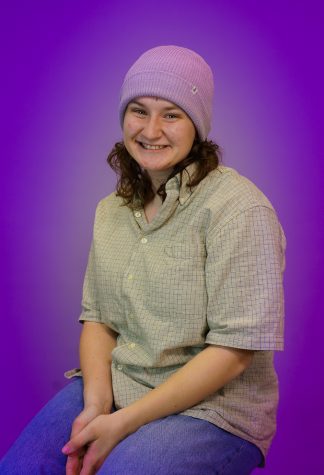Opinion: The Sticky Web of False Information
In an era saturated in social media, it is all too easy to trust what we see.
AP Photo/Alexander Zemlianichenko Jr.
The war in Ukraine has accentuated the speed with which false information can morph into seeming fact.
March 8, 2022
On February 24th a Twitter account posted a video captioned, “Ukraine fires missiles to intercept Russian aircraft artillery fire.” The shocking clip showed a plane sailing across a dark sky before being fired upon from the ground. The video received over 1,000 retweets and almost 9,000 likes, and was viewed over 570 thousand times.
However, there was one problem. The video didn’t depict a scuffle in Ukraine, or Russia, or anywhere in the real world. Instead, this conflict had taken place in the tactical shooter video game ARMA 3.
This was hardly an isolated incident. Similar “footage from Ukraine” was revealed to be from completely separate conflicts, or not from warfare at all. False or misleading information such as this was often eventually flagged and taken down, but not before potentially being seen and spread by thousands.
Misinformation on social media can take many forms. Most obviously, it can be outright fabricated facts. However, it can also be doctored videos, misleading quotes, or videos and pictures removed from their context. Those who spread misinformation through a retweet or an Instagram story might be intentionally seeking to deceive, but more often than not they are yet another victim caught in the sticky web of false information.
Our tendency to take things at face value heavily influences our falling victim to disinformation. Often, if a quote, statistic, or account seems at first glance to be reliable, we instantly trust it. Or, if a piece of information is shared by someone we consider trustworthy and intelligent, we automatically assume it must be true.
This effect is only multiplied by the presence of confirmation bias, the human tendency to search for and quickly accept information that fits in with our preconceived opinions, while rejecting any information that does not. Anyone supporting Russia’s actions in Ukraine would probably be much less likely to believe the false video of “Russian aircraft artillery fire” than someone who supports Ukraine. We are eager to believe information that makes sense or seems as if it could be right, and what seems right to us is largely determined by our own biases.
Misinformation’s prevalence also stems from its ability to take advantage of our desire to stay informed and help those in need.
With the constant stream of information and news available to anyone with internet access, there is immense pressure to stay up-to-date on world affairs. We want to avoid feeling out of the loop and we want to spread vital news as we find it so that others can be similarly informed. When encountering a shocking video or statistic, it feels as though it is our responsibility to bring awareness to it as quickly as possible. With something as important and monumental as potential warfare, this desire is only made more potent. We let certain pieces of info bypass our normal common sense checks for accuracy and context. Yet this push towards “share first, think later” is the exact mentality that helps misinformation take hold.
In the face of these dangerous tendencies, how can we work to combat misinformation and lies on social media? A small first step to take is to ask ourselves “Who?” and “What?” when we are presented with new information.
Who is sharing the information? The answer can ultimately be the most essential factor in determining whether to trust information. Is the item published or verified by a reputable news website or independent expert? Does the account posting the tweet or video have credentials or expertise in the field? Seeking multiple expert opinions and perspectives on a topic or study can help one build a well-rounded and accurate view of a topic and eliminate confirmation bias.
The second important step is to ask what information is being shared. Instead of listening to others’ summaries of studies or articles, we should read the entire text ourselves to get an accurate picture of their conclusions. If a picture appears potentially out of context, a reverse image search to find other places it has been used on the internet can provide answers.
In the past decade, as more people have started using social media and become dependent on Twitter, Instagram, and other social media sites for their source of news, the volume and power of misinformation has only grown. Thus, users of these platforms must remain vigilant to guarantee they are spreading accurate and complete information.
_____________________________________________________________________________________
Editors’ note: All opinions expressed on The Uproar are a reflection solely of the beliefs of the bylined author and not the journalism program at NASH. We continue to welcome school-appropriate comments and guest articles.












